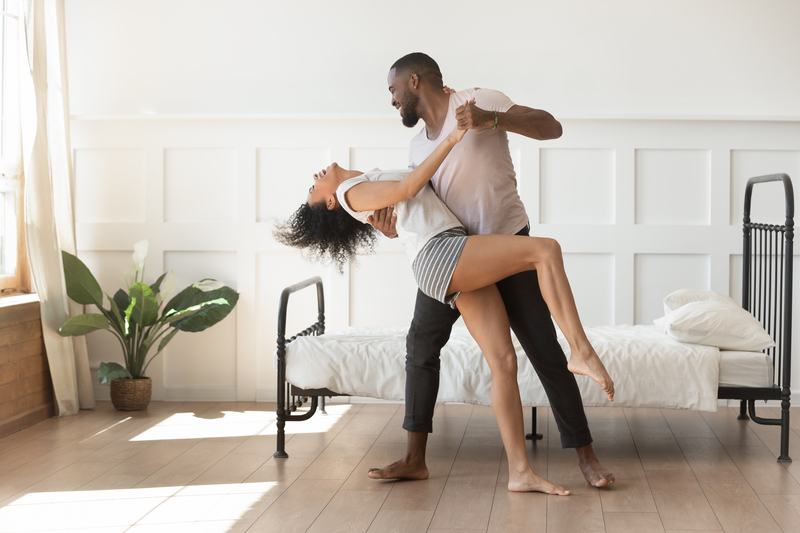March is National Brain Injury Awareness Month. It is estimated that each year, 1.7 million Americans sustain a brain injury. According to the Center for Disease Control (CDC), falls are the most common cause of a brain injury. Other causes may be but are not limited to infection, stroke and trauma. The Brain Injury Association of America (BIAA) leads the nation in observing Brain Injury Awareness Month by conducting an awareness campaign in March each year.
So why is this important to the dance community? Not only can dance be used in a therapeutic and rehabilitative capacity, but it can also support brain health for individuals who have not sustained a brain injury. In my private practice as a dance/movement therapist, I have had the pleasure of working with clients who have sustained brain injuries. It never ceases to amaze me just how much movement, and dance in particular, has the ability to heal and provide support to those who have difficulty with traditional means of communication. Let’s take a look at some ways dance enhances brain health.
Creates change
Dance helps create new neural connections. One example is when we engage in movements that cross the midline (or center) of our body. This actually allows one hemisphere of the brain to “talk” to the other. This essentially creates new neural connections that enhance our neuroplasticity or, in other words, our brain’s ability to change. Additionally, when we change the way we move, we create change on a cellular level. Change in the body can lead to positive changes in the brain.
Decreases risk of dementia
A study from 2003, in the New England Journal of Medicine, discovered that dance decidedly improved brain health. Researchers looked at the effects of 11 different types of physical activity but found that only one of the activities – dance – significantly lowered participants’ risk of acquiring dementia. Researchers determined that dancing involves both a mental effort and social interaction and that this particular type of stimulation helped reduce the risk of dementia. Dance also contributes to a greater cognitive reserve, which can also lower the risk of dementia or even delay the onset of symptoms associated with dementia.
Supports cognition
In a small study at North Dakota’s Minot State University, researchers found that exercise classes, Zumba in particular, improved mood and certain cognitive skills. Other studies showed that dance helps reduce stress, increase levels of the hormone serotonin and helped develop new neural connections, especially in regions involved in executive function, long-term memory and spatial recognition. Dance has been shown to improve focus, attention and memory.
Supports mental health
Studies have shown that dancing reduces depressive symptoms. Thanks to the boost in serotonin levels, dancing has been shown to enhance mood. Furthermore, thanks to fields like dance/movement therapy, there is significant proof that movement and dance support the mind-body connection which has shown to play significant factor in healing PTSD, trauma and coping with other mental health concerns and conditions.
Boosts creativity
Forbes released an article in 2018 entitled Here’s How Creativity Actually Improves Your Health. Engaging in dance and movement facilitates creativity. When we engage in creative endeavors, we see improvements in cognitive function, immune function and mood. It is important to find ways that we can tap into our creativity inside and outside the dance studio. Did you know that creativity actually increases as we age? Start daily practices of creativity now, and your brain will thank you later.
So what can you do to support your own brain health?
#1. Try new forms of dance to increase your movement repertoire. This is a wonderful way to boost neuroplasticity and increase your cognitive reserve.
#2. Participate in improvisational movement. Improvisation has been shown to change the brain. It benefits focus, attention and creativity.
#3. Find ways to engage in social interaction. Take a ballroom class, go out to a dance club, or take a group exercise class.
While many of us may never directly be impacted by a brain injury, brain health is important to everyone. It is never too soon to think about how we can support our brain to promote longevity and health. By starting healthy habits that support a healthy brain now, we can reap the benefits later in life.
For more information on brain injury and Brain Injury Awareness Month, visit www.biausa.org/public-affairs/public-awareness/brain-injury-awareness.

By Erica Hornthal, LCPC, BC-DMT, Dance/Movement Therapist.
Erica Hornthal is a licensed professional clinical counselor and board certified dance/movement therapist based in Chicago, IL. She received her MA in Dance/Movement Therapy and Counseling from Columbia College Chicago and her BS in Psychology from the University of Illinois Champaign-Urbana. Erica is the founder and CEO of Chicago Dance Therapy, the premier dance therapy and counseling practice in Chicago, IL. As a body-centered psychotherapist, Erica assists clients of all ages and abilities in harnessing the power of the mind-body connection to create greater awareness and understanding of emotional and mental health. For more, visit www.ericahornthal.com.















